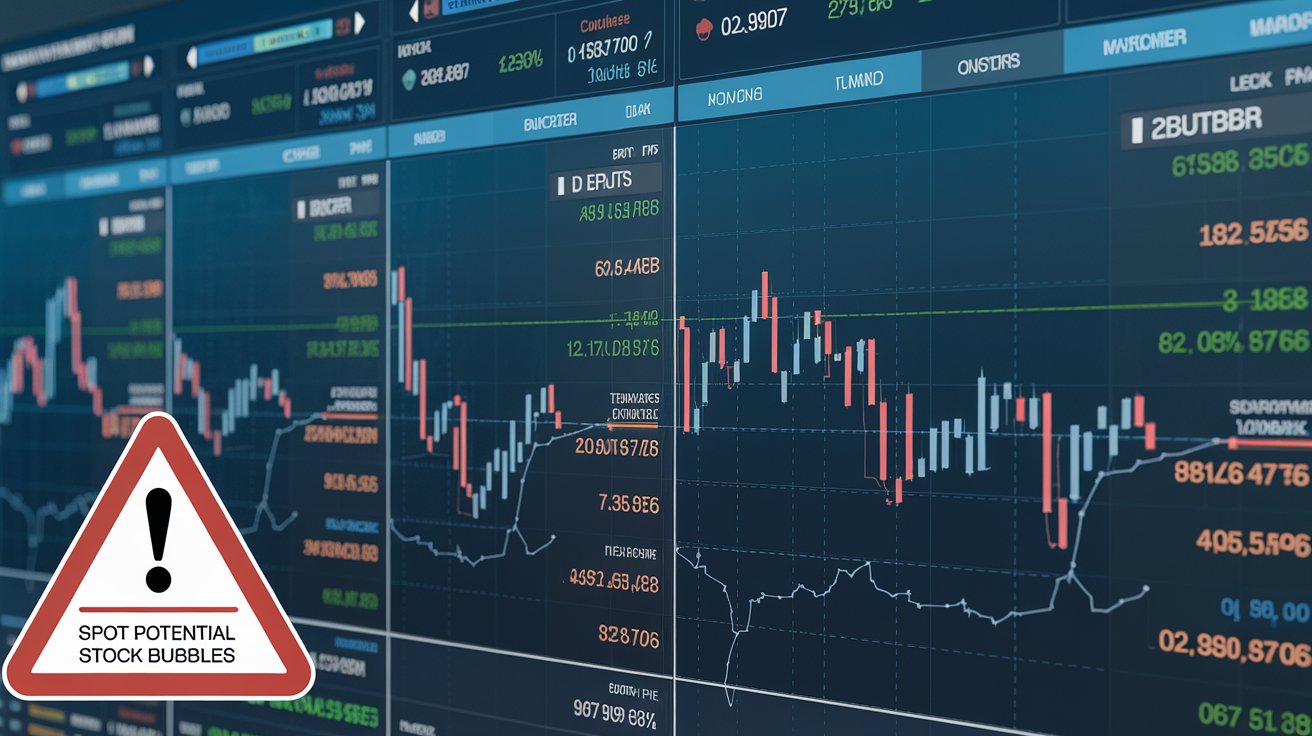As we navigate the complex financial landscape of 2024, the ability to identify potential stock bubbles becomes increasingly crucial for investors. With the global economy still recovering from recent shocks and adapting to new technological paradigms, the risk of asset bubbles forming in certain sectors is higher than ever. This article aims to equip you with the knowledge and tools to spot these potential bubbles before they burst, helping you make informed investment decisions.
Understanding Stock Bubbles
What is a Stock Bubble?
A stock bubble, also known as an asset bubble or speculative bubble, occurs when the price of an asset or a group of assets becomes significantly inflated beyond their fundamental value. This inflation is typically driven by excessive optimism, speculation, and a fear of missing out (FOMO) among investors.
Historical Context
To understand the present, we must learn from the past. Notable examples of stock bubbles include:
- The Dot-com Bubble (late 1990s)
- The Housing Bubble (mid-2000s)
- The Cryptocurrency Bubble (2017-2018)
Each of these events provides valuable lessons on the formation, growth, and eventual bursting of asset bubbles.
Key Indicators of Potential Stock Bubbles
1. Rapid Price Appreciation
One of the most obvious signs of a potential bubble is a sharp and sustained increase in stock prices that outpaces the growth in the underlying company’s fundamentals.
2. High Price-to-Earnings (P/E) Ratios
Exceptionally high P/E ratios, especially when compared to historical averages or industry peers, can indicate overvaluation.
3. Excessive Market Optimism
When market sentiment becomes overwhelmingly positive and critical voices are dismissed, it may signal irrational exuberance.
4. Increased Speculation and Leverage
A surge in margin trading, day trading, and the use of complex financial instruments can indicate speculative behavior.
5. Disconnect from Fundamentals
When stock prices no longer reflect the actual financial health and performance of companies, it’s a red flag.
Sector-Specific Considerations in 2024
Technology Sector
With the continued advancement of AI, blockchain, and quantum computing, the tech sector remains prone to speculative bubbles.
Green Energy and Sustainability
As governments worldwide push for cleaner energy solutions, this sector may experience rapid growth and potential overvaluation.
Biotechnology and Healthcare
In the wake of global health challenges, biotech stocks may see inflated valuations driven by breakthroughs and speculative investments.
Tools and Techniques for Bubble Detection
1. Financial Ratios Analysis
Utilize key financial ratios to assess stock valuations:
| Ratio | Formula | What It Indicates |
|---|---|---|
| P/E Ratio | Stock Price / Earnings per Share | How expensive a stock is relative to its earnings |
| Price-to-Book (P/B) Ratio | Stock Price / Book Value per Share | The premium investors are willing to pay over the company’s net assets |
| Price-to-Sales (P/S) Ratio | Stock Price / Sales per Share | How much investors are paying for each dollar of revenue |
| Debt-to-Equity Ratio | Total Liabilities / Shareholders’ Equity | The company’s financial leverage and risk |
2. Market Sentiment Analysis
Monitor social media, news outlets, and investor forums to gauge market sentiment. Tools like sentiment analysis algorithms can provide quantitative insights into market emotions.
3. Technical Analysis
Use charts and technical indicators to identify potential bubble formations:
- Look for parabolic price movements
- Analyze trading volumes for unusual spikes
- Monitor momentum indicators like the Relative Strength Index (RSI)
4. Comparative Historical Analysis
Compare current market conditions with historical bubbles to identify similarities and differences. This can provide context and perspective on present-day valuations.
The Role of Economic Factors
Interest Rates and Monetary Policy
Low interest rates can fuel asset bubbles by encouraging borrowing and risk-taking. Monitor central bank policies and their potential impact on asset valuations.
Inflation and Currency Fluctuations
High inflation or significant currency devaluations can lead to asset bubbles as investors seek to protect their wealth.
Regulatory Environment
Changes in regulations, such as those affecting specific industries or financial instruments, can contribute to bubble formation or prevention.
Psychological Factors in Bubble Formation
Herd Mentality
The tendency for investors to follow the crowd can amplify market movements and contribute to bubble formation.
Confirmation Bias
Investors may seek out information that confirms their beliefs, ignoring contradictory evidence and potentially fueling bubbles.
Recency Bias
The tendency to give more weight to recent events can lead to overconfidence in current market trends.
Strategies for Protecting Your Portfolio
- Diversification: Spread investments across various asset classes and sectors to mitigate risk.
- Regular Rebalancing: Periodically adjust your portfolio to maintain your desired asset allocation.
- Stay Informed: Continuously educate yourself about market conditions and economic factors.
- Maintain a Long-Term Perspective: Avoid getting caught up in short-term market hype.
- Set Stop-Loss Orders: Use automatic sell orders to limit potential losses if a bubble bursts.
Conclusion
As we navigate the complex economic landscape of 2024, the ability to identify potential stock bubbles is more critical than ever. By understanding the key indicators, utilizing analytical tools, and considering both economic and psychological factors, investors can better protect their portfolios from the devastating effects of bubble bursts.
Remember that while the signs discussed in this article can help identify potential bubbles, predicting exact market movements remains challenging. Always conduct thorough research, consult with financial professionals, and make investment decisions based on your individual financial goals and risk tolerance.
Stay vigilant, stay informed, and approach the market with a balanced perspective. By doing so, you’ll be better equipped to navigate the potential pitfalls and opportunities in the ever-evolving world of stock markets.

